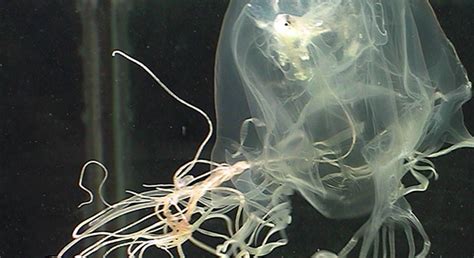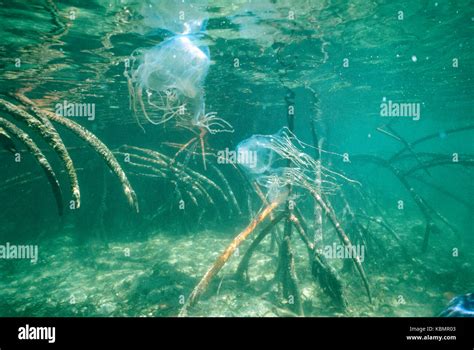box jellyfish distribution Box jellyfish have been long known for their powerful sting. The lethality of the Cubozoan venom to humans is the primary reason for its research. Although unspecified species . See more Trench boxes come in various designs to accommodate different excavation needs and site conditions. Understanding the distinct types of trench boxes can help in selecting the most appropriate one for a specific project, .
0 · where are box jellyfish located
1 · what does chironex fleckeri eat
2 · chironex fleckeri habitat
3 · box jellyfish location map
4 · box jellyfish habitat map
5 · box jellyfish genus and species
6 · box jellyfish classification
7 · australian box jellyfish diet
Corrosion-resistant NEMA enclosures include types 3X, 3RX, 3SX, 4X, 6P, and 11; All NEMA enclosure types are designed to protect personnel from incidental contact with the enclosed .
Although the notoriously dangerous species of box jellyfish are largely restricted to the tropical Indo-Pacific region, various species of box jellyfish can be found widely in tropical and subtropical oceans (between 42° N and 42 °S), including the Atlantic Ocean and the east Pacific Ocean, with species as far north as . See moreBox jellyfish (class Cubozoa) are cnidarian invertebrates distinguished by their box-like (i.e. cube-shaped) body. Some species of box jellyfish produce potent venom delivered by contact with their tentacles. Stings from some species, . See moreCubozoans are widely distributed throughout tropical and subtropical regions, yet the detection of these organisms can be . See moreAge and growthIt has been found that the statoliths, which are composed of calcium sulfate hemihydrate, exhibit clear sequential incremental layers, . See more
Box jellyfish have been long known for their powerful sting. The lethality of the Cubozoan venom to humans is the primary reason for its research. Although unspecified species . See more
Historically, cubozoans were classified as an order of Scyphozoa until 1973, when they were put in their own class due to their unique . See moreThe medusa form of a box jellyfish has a squarish, box-like bell, from which its name is derived. From each of the four lower corners of this hangs a short pedalium or stalk which bears one or more long, slender, hollow tentacles. The rim of the bell is folded . See moreBox jellyfish have a mitochondrial genome that is arranged into eight linear chromosomes. As of 2022, only two Cubozoan species were fully sequenced, Alatina alata and Morbakka virulenta. A. alata has 66,156 genes, the largest gene count for any See more
Box jellies, also called sea wasps and marine stingers, live primarily in coastal waters off Northern Australia and throughout the Indo-Pacific. They are pale blue and transparent in color and.
Box jellyfish comprise several species, each holding its own individual characteristics and distribution patterns. Given are two examples: Chiropsalmus quadrigatus: Known as the four-sided box jellyfish, this species .• Beadnell CE, Rider TA, Williamson JA, Fenner PJ (May 1992). "Management of a major box jellyfish (Chironex fleckeri) sting. Lessons from the first minutes and hours". The Medical Journal of Australia. 156 (9): 655–8. doi:10.5694/j.1326-5377.1992.tb121467.x. PMID 1352619. S2CID 36741049.• Barry Tobin (16 March 2010). "Dangerous Marine Animals of Northern Australia: Sea Wasp". AIMS Data Centre. Australian Institute of Marine Science. Retrieved 22 September 2010.Distribution: Predominantly found in the waters of the Pacific region, especially around Australia and Southeast Asia. Families: This order is primarily made up of the family Chirodropidae, but also includes two more families: – .The box jellyfish is a large and transparent sea jelly with a box-shaped bell and up to 60 tentacles in four clumps along the base of the bell.
Box Jellyfish Distribution, Population, and Habitat. Box jellyfish inhabit warm coastal waters worldwide. This includes parts of the Atlantic, Pacific, and Indian Oceans. The deadliest species typically live in the Indo-Pacific .Habitat and Distribution. Box jellyfish are found in the warm coastal waters of the Indo-Pacific region, including Australia, Thailand, Malaysia, and the Philippines. They are commonly found in shallow waters near the shore, particularly . Despite this, some taxa, such as Tripedalia cystophora, have broad pantropical distributions suggesting a successful phenotype and a long geologic history. Statoliths allow medusae to be aged.It is divided by four equidistant septa into a central stomach and four gastric pockets. The eight gonads are located in pairs on either side of the four septa. The margins of the septa bear bundles of small gastric filaments which house nematocysts .
box jellyfish, (class Cubozoa), any cnidarian (or coelenterate) belonging to the class Cubozoa. The class is made up of approximately 50 species, which are known for their semitransparent box-shaped bell and the toxic venom produced by some species.
where are box jellyfish located
what does chironex fleckeri eat


Box jellies, also called sea wasps and marine stingers, live primarily in coastal waters off Northern Australia and throughout the Indo-Pacific. They are pale blue and transparent in color and.
Box jellyfish comprise several species, each holding its own individual characteristics and distribution patterns. Given are two examples: Chiropsalmus quadrigatus: Known as the four-sided box jellyfish, this species inhabit the Pacific Ocean and is found mainly off the coast of Japan.
Chironex fleckeri, commonly known as the Australian box jelly, and nicknamed the sea wasp, is a species of extremely venomous box jellyfish found in coastal waters from northern Australia and New Guinea to Indonesia, Cambodia, Malaysia and Singapore, the Philippines and Vietnam. [1]
Distribution: Predominantly found in the waters of the Pacific region, especially around Australia and Southeast Asia. Families: This order is primarily made up of the family Chirodropidae, but also includes two more families: – Chiropsalmidae and Chiropsellidae.
The box jellyfish is a large and transparent sea jelly with a box-shaped bell and up to 60 tentacles in four clumps along the base of the bell. Box Jellyfish Distribution, Population, and Habitat. Box jellyfish inhabit warm coastal waters worldwide. This includes parts of the Atlantic, Pacific, and Indian Oceans. The deadliest species typically live in the Indo-Pacific region as well as off the coast of northern Australia. The Gulf of Mexico is another common haunt.Habitat and Distribution. Box jellyfish are found in the warm coastal waters of the Indo-Pacific region, including Australia, Thailand, Malaysia, and the Philippines. They are commonly found in shallow waters near the shore, particularly around mangroves and estuaries. Behavior Despite this, some taxa, such as Tripedalia cystophora, have broad pantropical distributions suggesting a successful phenotype and a long geologic history. Statoliths allow medusae to be aged.
It is divided by four equidistant septa into a central stomach and four gastric pockets. The eight gonads are located in pairs on either side of the four septa. The margins of the septa bear bundles of small gastric filaments which house nematocysts . box jellyfish, (class Cubozoa), any cnidarian (or coelenterate) belonging to the class Cubozoa. The class is made up of approximately 50 species, which are known for their semitransparent box-shaped bell and the toxic venom produced by some species.
Box jellies, also called sea wasps and marine stingers, live primarily in coastal waters off Northern Australia and throughout the Indo-Pacific. They are pale blue and transparent in color and. Box jellyfish comprise several species, each holding its own individual characteristics and distribution patterns. Given are two examples: Chiropsalmus quadrigatus: Known as the four-sided box jellyfish, this species inhabit the Pacific Ocean and is found mainly off the coast of Japan.Chironex fleckeri, commonly known as the Australian box jelly, and nicknamed the sea wasp, is a species of extremely venomous box jellyfish found in coastal waters from northern Australia and New Guinea to Indonesia, Cambodia, Malaysia and Singapore, the Philippines and Vietnam. [1]
Distribution: Predominantly found in the waters of the Pacific region, especially around Australia and Southeast Asia. Families: This order is primarily made up of the family Chirodropidae, but also includes two more families: – Chiropsalmidae and Chiropsellidae.The box jellyfish is a large and transparent sea jelly with a box-shaped bell and up to 60 tentacles in four clumps along the base of the bell. Box Jellyfish Distribution, Population, and Habitat. Box jellyfish inhabit warm coastal waters worldwide. This includes parts of the Atlantic, Pacific, and Indian Oceans. The deadliest species typically live in the Indo-Pacific region as well as off the coast of northern Australia. The Gulf of Mexico is another common haunt.

Habitat and Distribution. Box jellyfish are found in the warm coastal waters of the Indo-Pacific region, including Australia, Thailand, Malaysia, and the Philippines. They are commonly found in shallow waters near the shore, particularly around mangroves and estuaries. Behavior
chironex fleckeri habitat
box jellyfish location map
CNC, or Computer Numerical Control, encompasses the manufacturing process where machines cut, carve and form parts based on computer codes that control the cutting tool’s speed and movement. These machines cut metals, wood, foam, composites, plastics and more into precise parts with uses in almost every industry.
box jellyfish distribution|where are box jellyfish located